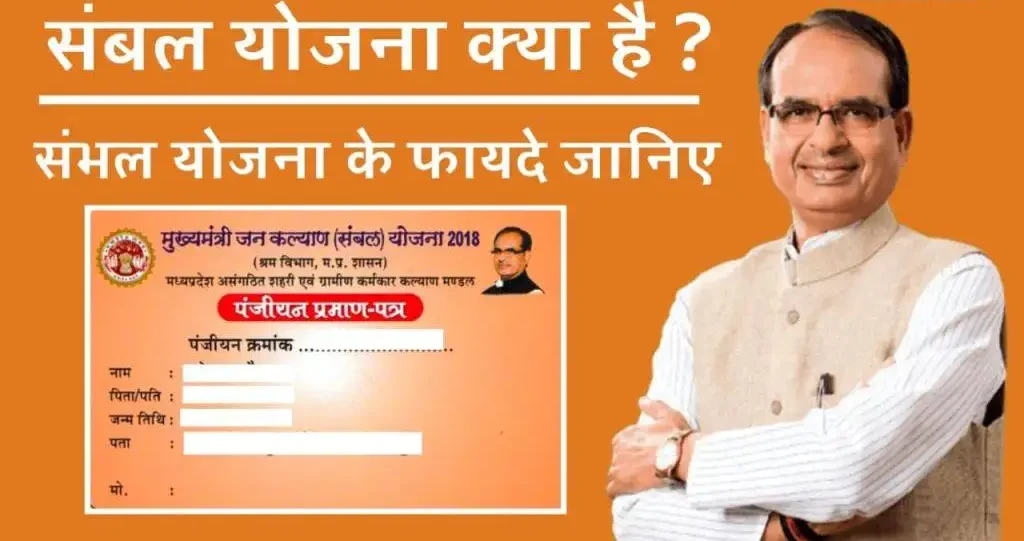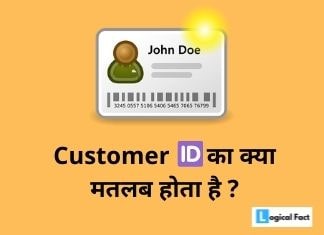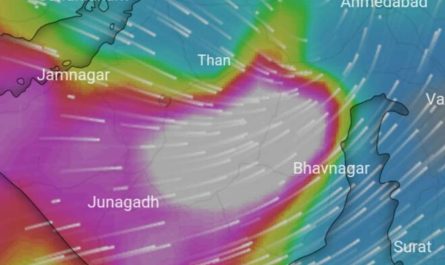Contents
The Sambal Card represents a significant step forward in addressing socio-economic challenges within its targeted community. Designed to offer crucial support and benefits, this initiative aims to alleviate financial burdens for its beneficiaries. In this article, we delve into the nuances of the Sambal Card, exploring its features, benefits, and the impact it has had on its users. From its inception to its current application, this guide provides an in-depth look at how the Sambal Card is making a difference in the lives of those it serves.
Background and Development of the Sambal Card
The inception of the Sambal Card is rooted in a response to growing socio-economic disparities in the targeted community. Recognizing the need for a sustainable and accessible financial support system, the development of the Sambal Card was initiated as a means to bridge this gap. This section explores the origins, development, and driving forces behind this innovative program.
1. Origins
The idea for the Sambal Card emerged from a series of discussions among policymakers, economists, and social welfare experts who identified a critical need for financial assistance among low-income families. These discussions highlighted the challenges faced by these families in accessing basic needs like food, healthcare, and education.
2. Development
The development phase involved extensive research and collaboration with various stakeholders. Surveys and studies were conducted to understand the specific needs of the potential beneficiaries. This phase was crucial in shaping the features of the Sambal Card, ensuring that it catered effectively to the needs it aimed to address.
3. Key Contributors
The development of the Sambal Card was a collaborative effort. It involved:
- Government Agencies: They played a pivotal role in providing the necessary funding and regulatory support.
- Non-Governmental Organizations (NGOs): These entities offered insights into the on-ground realities and challenges faced by the target audience.
- Financial Institutions: Their involvement was crucial in the technical setup and operational functioning of the card.
- Community Leaders: They provided invaluable input regarding the cultural and social aspects that needed consideration.
4. Socio-Economic Context
The Sambal Card was developed against a backdrop of increasing economic strain on lower-income families, exacerbated by factors such as inflation, unemployment, or economic downturns. The card was envisioned as a tool not just for immediate relief but also as a step toward long-term economic stability for its beneficiaries.
5. Implementation Strategy
The implementation of the Sambal Card involved a phased rollout. Initial pilot programs were conducted in select areas to gauge effectiveness and gather feedback. Based on the outcomes of these pilots, further refinements were made before a broader rollout.
6. Impact Assessment
Early assessments of the program’s impact were encouraging, indicating a positive reception and tangible benefits among the users. These assessments also provided crucial data for the continuous improvement of the program.
Features and Benefits
The Sambal Card is designed with a range of features tailored to meet the needs of its beneficiaries, providing substantial benefits and support. This section explores the key features of the card and the advantages it offers to cardholders.
Key Features
- Direct Benefit Transfer: The card is linked to a system that enables direct transfer of benefits, reducing delays and eliminating the need for intermediaries.
- Multi-Purpose Use: It can be used for various transactions, including purchasing groceries, paying for utilities, and accessing healthcare services.
- Security and Transparency: Equipped with secure technology, the card ensures safe transactions and minimizes fraud. It also allows for transparent tracking of how funds are spent.
- Ease of Access: Designed for user-friendliness, the card can be easily used by individuals with minimal financial literacy.
- Widely Accepted: The Sambal Card is accepted at a vast network of outlets, including supermarkets, pharmacies, and government service centers.
Benefits
- Financial Empowerment: By providing direct financial assistance, the card empowers families to manage their expenses more effectively.
- Increased Accessibility to Essential Services: Cardholders can access essential services like healthcare and education, which might otherwise be financially out of reach.
- Reduced Economic Vulnerability: Regular and reliable financial support helps reduce the vulnerability of families during economic downturns or emergencies.
- Encourages Financial Literacy and Responsibility: The card also serves as a tool for promoting financial literacy among its users, encouraging responsible spending and budgeting.
- Social Inclusion: By easing financial strains, the card plays a role in fostering greater social inclusion for economically disadvantaged groups.
Sambal Card had a ripple effect on the communities it serves. It has not only provided immediate financial relief but also contributed to the overall economic stability of these communities. Cardholders report an improved quality of life, with better access to necessities and a reduced burden of financial stress.
Eligibility and Application Process
The Sambal Card program is designed to cater to specific segments of the population who are most in need of financial assistance. Understanding the eligibility criteria and the application process is crucial for potential beneficiaries. This section details these aspects, providing clear guidance on how to access the benefits of the Sambal Card.
Eligibility Criteria
- Income Threshold: The primary criterion is based on household income. Families or individuals falling below a specified income level are eligible to apply.
- Residential Status: Applicants must be legal residents or citizens of the region where the Sambal Card program is operational.
- Special Categories: Priority may be given to certain groups, such as families with children, elderly individuals, people with disabilities, or those facing chronic unemployment.
Application Process
-
Application Submission: Interested individuals can apply for the Sambal Card through an online portal Website or at designated government offices. The process involves filling out an application form with personal and financial details.
-
Documentation: Applicants must submit certain documents for verification. These typically include proof of identity (such as a national ID card), proof of residence, and income-related documents (like pay slips or tax returns).
-
Verification and Approval: Once the application is submitted, it undergoes a verification process. Government agencies cross-check the provided information to ensure eligibility. This process may take a few weeks.
-
Notification of Outcome: Applicants are notified of the outcome through email, SMS, or postal mail. If approved, they receive information on how to collect or activate their Sambal Card.
-
Distribution and Activation: The card is either mailed to the applicant or must be collected in person from a specified location. Instructions for activation and usage are provided upon receipt of the card.
Assistance and Support
- Help Centers: To assist applicants, help centers and hotlines are available for queries related to the application process.
- Online Resources: The official website provides detailed information, FAQs, and guides to assist applicants.
- Community Outreach: Local community centers and NGOs often help raise awareness about the program and assist potential applicants in the application process.
User Experiences and Case Studies
To truly understand the impact of the Sambal Card, it is essential to delve into the stories of those it has directly affected. This section presents real-life case studies and user experiences that highlight the card’s effectiveness in improving lives and fostering positive change.
Case Study 1: A Family’s Journey to Financial Stability
- Background: The first case study focuses on a family of four struggling to meet their basic needs due to low income.
- Experience: Upon receiving the Sambal Card, the family was able to purchase essential groceries and pay for their children’s school fees without compromising on other necessities.
- Outcome: The consistent financial support provided by the card helped the family stabilize their financial situation, reducing stress and improving their overall quality of life.
Case Study 2: Support for an Elderly Individual
- Background: This case study centers around an elderly widow with limited income and no family support.
- Experience: The Sambal Card enabled her to afford medications and regular health check-ups, which were previously out of her financial reach.
- Outcome: The card not only improved her physical health but also gave her a sense of security and independence.
User Feedback and Testimonials
- Positive Impact on Daily Life: Many users have reported a significant reduction in financial stress, with the ability to afford necessities and manage emergency expenses more effectively.
- Empowerment and Dignity: The card has been praised for providing a dignified way of receiving assistance, allowing beneficiaries to make their own choices in spending.
- Suggestions for Improvement: Some users have suggested enhancements, such as expanding the network of participating outlets or increasing the financial benefits.
Challenges and Criticisms
While the Sambal Card has been largely beneficial, it is important to acknowledge and address the challenges and criticisms that have emerged since its implementation. This section discusses the various obstacles faced and the critiques raised, providing a balanced view of the program’s effectiveness.
Challenges
-
Distribution and Accessibility Issues: One of the primary challenges has been ensuring the card reaches all eligible individuals, especially in remote or underserved areas. Accessibility issues have hindered some from taking full advantage of the program.
-
Technical Glitches: Problems with the card’s technical infrastructure, such as issues with electronic payment systems or server downtimes, have occasionally inconvenienced users.
-
Misuse and Fraud: Instances of misuse of the card, either by beneficiaries or by merchants, have raised concerns over the monitoring and regulation of the program.
-
Bureaucratic Delays: Some applicants have faced delays in the processing of their applications or in receiving their cards, often due to bureaucratic hurdles.
-
Limited Scope of Benefits: Critics argue that the financial assistance provided, though helpful, is not sufficient to address the deeper issues of poverty and economic disparity.
Criticisms
-
Eligibility Criteria Exclusion: Critics have pointed out that the eligibility criteria may inadvertently exclude some vulnerable groups who are in need but do not meet the specific requirements.
-
Dependency Concerns: There is a concern that long-term reliance on the card could potentially discourage self-reliance and efforts towards improving personal economic situations.
-
Impact on Local Businesses: Some local businesses have expressed concerns that the widespread use of the card in certain chains or outlets might negatively impact smaller, local businesses.
-
Long-Term Sustainability: Questions have been raised about the long-term sustainability of the program, particularly in terms of funding and the ability to adapt to changing economic conditions.
Comparison with Similar Programs
The Sambal Card, while unique in its approach and implementation, shares similarities with other financial assistance programs worldwide. This comparison with similar initiatives provides a broader perspective on how different regions address socio-economic challenges.
Similar Programs
- Food Stamps in the United States (SNAP): The Supplemental Nutrition Assistance Program provides eligible low-income individuals and families with benefits to buy food.
- NREGA in India: The National Rural Employment Guarantee Act guarantees rural households 100 days of wage employment per year, aiming to enhance livelihood security.
- Bolsa Família in Brazil: This program provides financial aid to poor Brazilian families, conditional on the children attending school and being vaccinated.
Key Comparison Factors
-
Target Beneficiaries: While all these programs aim to assist economically disadvantaged groups, their focus varies: SNAP focuses on food security, NREGA on employment, Bolsa Família on family welfare, and the Sambal Card on general financial assistance.
-
Method of Assistance: SNAP and the Sambal Card provide direct financial or equivalent assistance for purchases, whereas NREGA focuses on providing employment, and Bolsa Família uses conditional cash transfers.
-
Scope and Reach: Programs like Bolsa Família and NREGA cover large populations, often nationwide, whereas the Sambal Card might have a more localized or regional focus.
-
Conditional vs. Unconditional Assistance: The Sambal Card and SNAP provide unconditional assistance, whereas Bolsa Família’s assistance is conditional on certain family welfare parameters.
-
Impact on Local Economy: All programs positively impact the local economy, but their approach differs. NREGA, for instance, boosts rural employment, while the Sambal Card increases purchasing power.
-
Sustainability and Funding: Each program has different models of sustainability and funding, with NREGA and Bolsa Família heavily reliant on government funding, similar to the Sambal Card.
-
Technological Integration: The Sambal Card and SNAP use technology for distribution and tracking, making them more efficient but also prone to technical issues.
Also Read:
Future Prospects
As the Sambal Card continues to evolve, its future prospects are shaped by the successes and challenges it has encountered so far. Looking ahead, there are several potential developments and directions the program might take. This section explores these future possibilities, considering both the program’s growth and its adaptability to changing socio-economic landscapes.
Expansion of Scope and Reach
- Wider Geographic Coverage: Plans to extend the program to more regions, making it accessible to a larger population, are under consideration.
- Increased Benefit Amounts: To keep pace with inflation and rising living costs, there might be adjustments to the amount of financial aid provided.
Technological Advancements
- Improved Digital Infrastructure: Investing in more robust and secure technology to enhance user experience and reduce the risk of technical issues.
- Mobile Integration: Development of a mobile app could provide users with easier access to account management, transaction history, and support services.
Policy and Eligibility Refinements
- Inclusive Eligibility Criteria: Revise the eligibility criteria to include more vulnerable groups who might currently be excluded.
- Dynamic Benefit Allocation: Implementing a system where the benefits can be adjusted based on real-time economic indicators or individual circumstances.
Conclusion
As the program continues to evolve, it stands as a testament to the potential of well-structured social welfare initiatives to make a tangible difference in people’s lives. The Sambal Card is not just a financial tool but a beacon of hope and empowerment for its beneficiaries, offering a brighter and more stable future. Its ongoing success and potential expansions could serve as a model for similar programs globally, underscoring the importance of thoughtful and empathetic responses to societal needs.
FAQs On Sambal Card
What is the Sambal Card?
The Sambal Card is a social welfare initiative designed to provide financial assistance to economically disadvantaged individuals and families. It offers direct financial aid and is used for purchasing essentials, paying for utilities, and accessing healthcare services.
Who is eligible for the Sambal Card?
Eligibility for the Sambal Card typically includes low-income families, elderly individuals, people with disabilities, and those facing chronic unemployment. Applicants must meet certain income thresholds and be legal residents or citizens in the region where the program is operational.
How can I apply for the Sambal Card?
Applications for the Sambal Card can be submitted online or at designated government offices. Applicants are required to fill out a form and provide necessary documentation, such as proof of identity, residence, and income.
What benefits does the Sambal Card provide?
The Sambal Card provides financial assistance that can be used for a variety of purposes, including buying groceries, paying for educational expenses, and covering healthcare costs. It aims to reduce financial stress and improve the quality of life for its beneficiaries.
Can the Sambal Card be used in any store?
The Sambal Card is accepted at a wide network of outlets, including supermarkets, pharmacies, and government service centers. The range of participating outlets may vary based on agreements with the program administrators.




